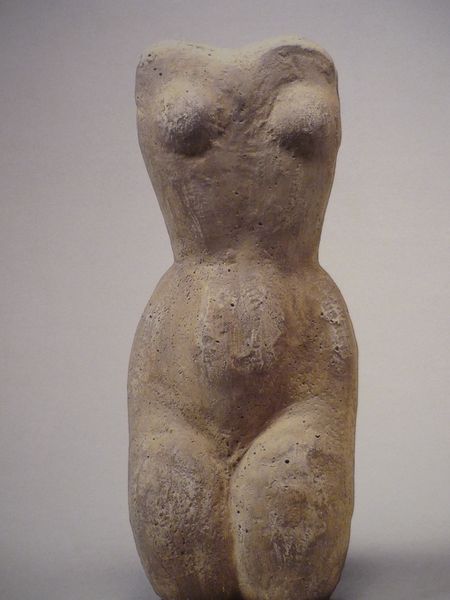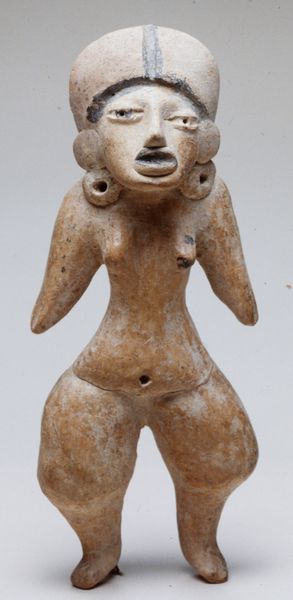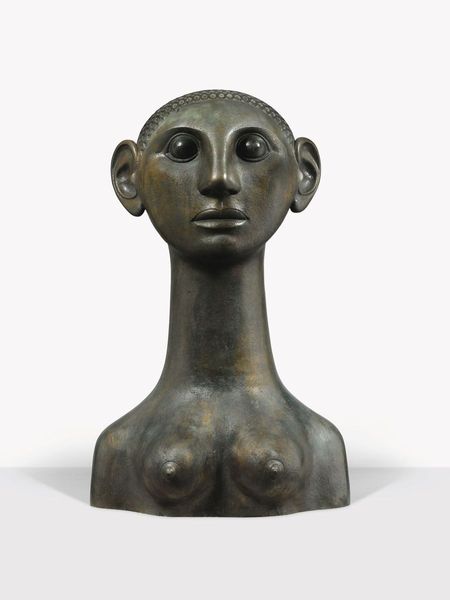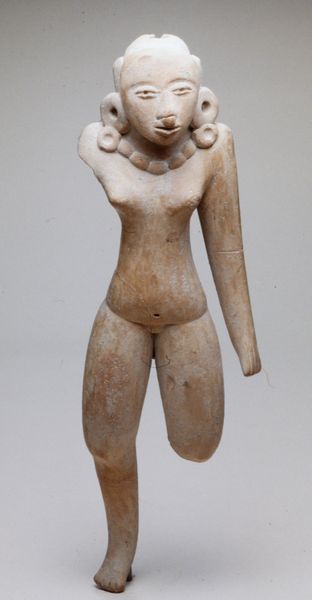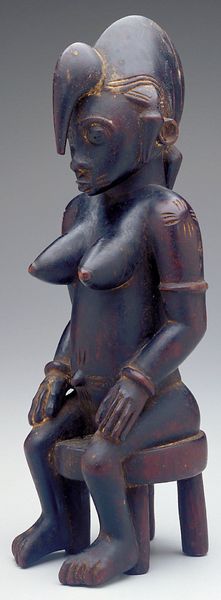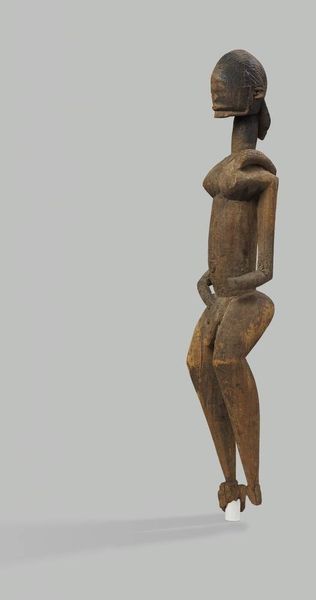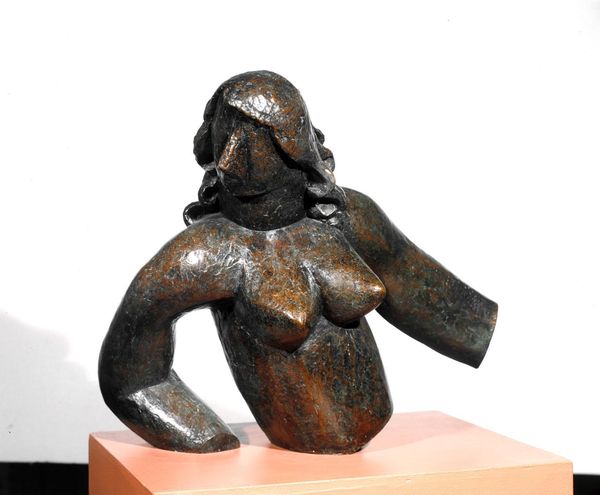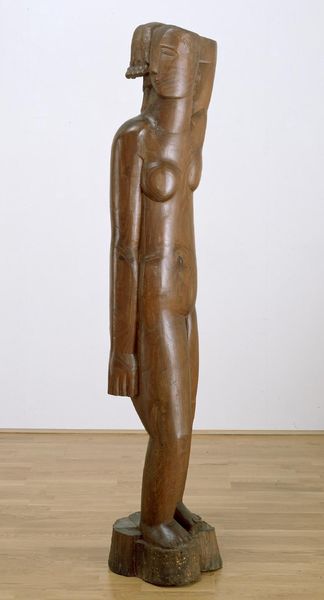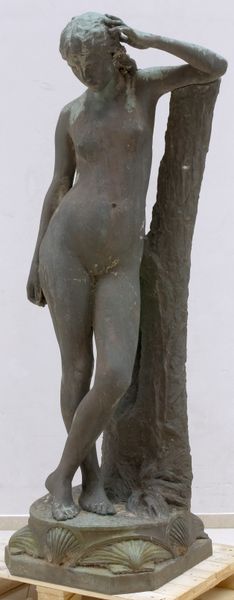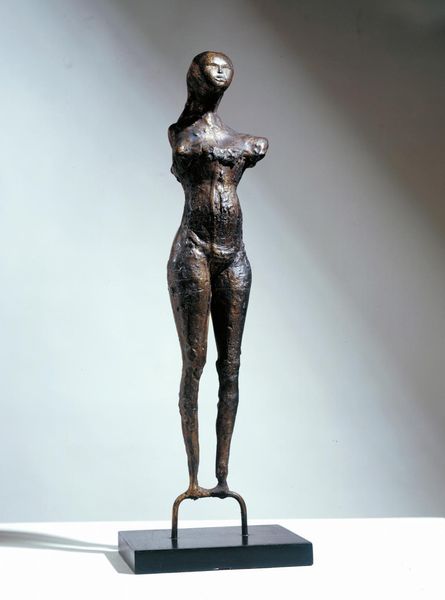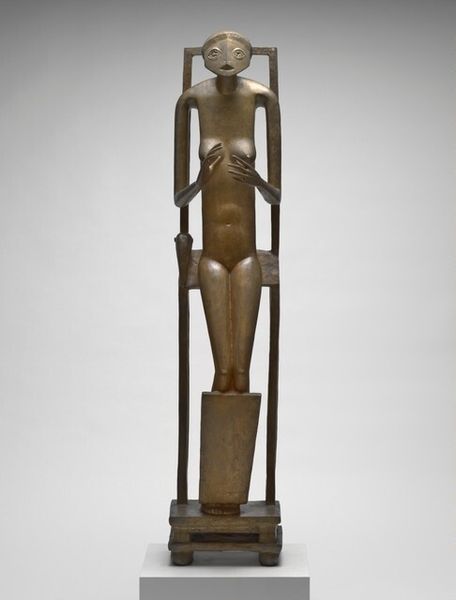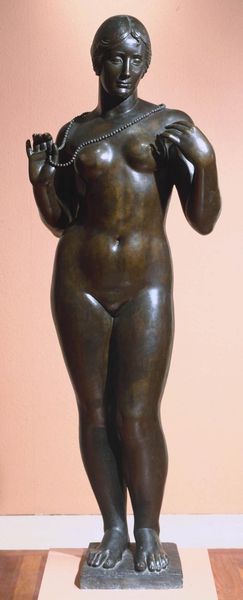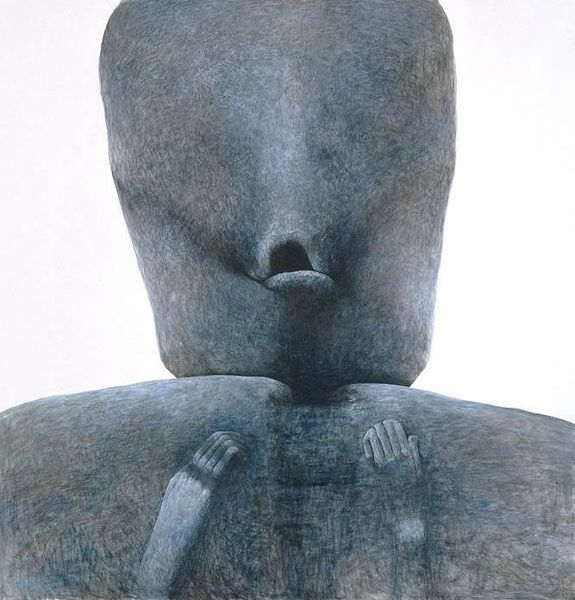
Dimensions: object: 1880 x 686 x 540 mm, 180 kg
Copyright: © Jean Ipousteguy | CC-BY-NC-ND 4.0 DEED, Photo: Tate
Curator: Here we have Jean Ipoustéguy’s sculpture, "Earth," residing in the Tate Collections. It is quite a monumental piece. Editor: The sheer physicality strikes me—the blunt, almost brutal forms. It evokes an unsettling yet powerful presence, wouldn't you agree? Curator: Indeed. Note the strategic fragmentation—the missing portion of the right side—it undermines the conventional notion of the idealized female form. Editor: And it is no accident! This echoes a tumultuous era of social change. Ipoustéguy used art to question accepted standards and comment on the human condition. Curator: Precisely, it disrupts the smooth, continuous lines of traditional sculpture. The materiality itself speaks volumes about fragility and resilience. Editor: It's a compelling reminder of how art can be both a reflection and a catalyst for social commentary. Curator: A thought-provoking sculpture, indeed. Editor: One that resonates powerfully.
Comments
Join the conversation
Join millions of artists and users on Artera today and experience the ultimate creative platform.
tate 6 months ago
⋮
Ipousteguy trained as a painter and made stained glass windows, but in 1949 he turned exclusively to sculpture. His sculptures were at first abstract and geometric but around 1955 his forms became lumpier and more related to the human figure. 'Earth' was Ipousteguy's first life-size sculpture of a human figure, and it was followed in 1963 by another, entitled 'Man'. Ipousteguy wrote of 'Earth': 'this sculpture is limited to a torso and the face is hidden under the facets of a helmet .... although Earth has two legs, her arms are not completely detached from her body. One has to wait for Man in 1963 for the limbs to separate and spread out.' Gallery label, August 2004
